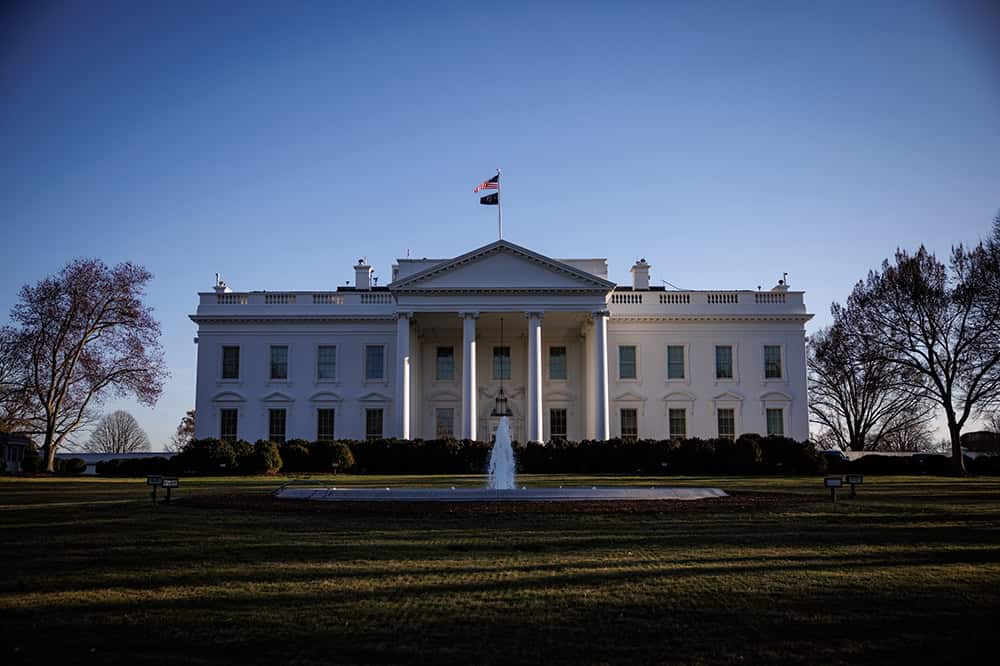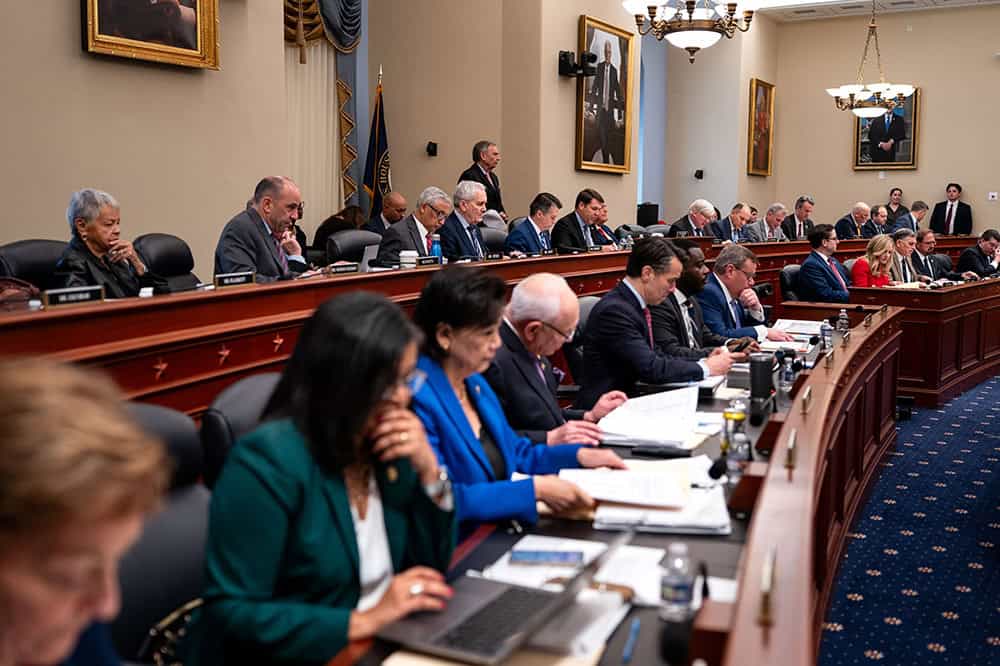American Voters Want Solutions to the National Debt, Following Significant Deficit Increases
The June 2018 Fiscal Confidence Index, Modeled after the Consumer Confidence Index, is 55 (100 is Neutral)
NEW YORK (June 28, 2018) — Following news that the federal deficit for May was 66 percent higher than one year ago, American voters across party lines want the President and Congress to act, according to the Peter G. Peterson Foundation’s June Fiscal Confidence Index, a monthly measure of public attitudes about the national debt and the efforts elected leaders are making to address America’s fiscal challenges. This month’s Fiscal Confidence Index, modeled after the Consumer Confidence Index, is 55 (100 is neutral), indicating that Americans are highly concerned about our fiscal posture.
Voters were surveyed for the index just after the federal government posted a $146.8 billion budget deficit for May, compared to $88.4 billion in May 2017. For the first eight months of this fiscal year, the federal budget deficit hit $532 billion, 23 percent higher than the same period last year. In the survey, a majority of Americans (63%) say that their level of concern over the debt has increased in recent years, and 61% expect the national debt problem to get worse over the next few years.
Americans widely agree (71%) that the national debt should be among the President and Congress’s top three priorities – with consensus across party lines (Democrats 69%, independents 68%, and Republicans 79%). The majority of younger Americans (aged 18 to 35) – who will inherit the debt – also believe the issue should be a top priority (68%).
“Voters are making the connection between recent tax and spending legislation and our rapidly growing national debt and deficits,” said Michael A. Peterson, Chairman and CEO of the Peter G. Peterson Foundation. “They are rightly concerned about our dangerous fiscal path and the threat it poses to our economy and to future generations. Now is the time to protect our children and grandchildren’s future, and lawmakers have a range of solutions available to put America on a more sustainable fiscal course.”
The Fiscal Confidence Index measures public opinion about the national debt by asking six questions in three key areas:
- CONCERN: Level of concern and views about the direction of the national debt.
- PRIORITY: How high a priority addressing the debt should be for elected leaders.
- EXPECTATIONS: Expectations about whether the debt situation will get better or worse in the next few years.
The survey results from these three areas are weighted equally and averaged to produce the Fiscal Confidence Index value. The Fiscal Confidence Index, like the Consumer Confidence Index, is indexed on a scale of 0 to 200, with a neutral midpoint of 100. A reading above 100 indicates positive sentiment. A reading below 100 indicates negative sentiment.
Fiscal Confidence Index Key Data Points:
- The June 2018 Fiscal Confidence Index value is 55. (The May value was 51, and the April value was 47.)
- The current Fiscal Confidence Index score for CONCERN about the debt is 55, indicating deep concern about the debt. The score for debt as a PRIORITY that leaders must address is 31, indicating that Americans want elected leaders to make addressing long-term debt a high priority. The score for EXPECTATIONS about progress on the debt is 80. The Fiscal Confidence Index is the average of these three sub-category scores.
- For a description of the complete methodology, see the Appendix below.
The Peter G. Peterson Foundation commissioned a poll by the Global Strategy Group and North Star Opinion Research to survey public opinion on the national debt. The nationwide poll included 1,000 U.S. registered voters, surveyed by telephone between June 18, 2018 and June 21, 2018. The poll has a margin of error of +/- 3.1%. The poll examined voters’ opinions on the national debt, political leadership, and America’s fiscal and economic health.
Detailed poll results can be found online at: www.pgpf.org/FiscalConfidenceIndex.
About the Peter G. Peterson Foundation
The Peter G. Peterson Foundation is a nonprofit, nonpartisan organization that is dedicated to increasing public awareness of the nature and urgency of key fiscal challenges threatening America’s future, and to accelerating action on them. To address these challenges successfully, we work to bring Americans together to find and implement sensible, long-term solutions that transcend age, party lines and ideological divides in order to achieve real results. To learn more, please visit www.pgpf.org.
APPENDIX: Fiscal Confidence Index Methodology and Questions
- The Fiscal Confidence Index is released monthly by the Peter G. Peterson Foundation.
- The Fiscal Confidence Index value is based on six questions in three categories.
- As is done with the Consumer Confidence Index, the first step in calculating the Fiscal Confidence Index is determining the “Relative Value” for each question. This calculation is made by taking the positive response for each question and dividing it by the sum of the positive and negative responses. Each question was asked on a four-point scale, and answers were weighted according to intensity, with the strongest responses counting twice as much as the middle responses (“much” better or worse answers count twice as heavily as “somewhat” better or worse answers).
- The scores for the Concern, Priority, and Expectations categories are determined by averaging the scores derived from the two questions in each category.
- The Fiscal Confidence Index value is converted from the Relative Value to place it on a scale on which 100 indicates equal positive and negative sentiment, while values below 100 indicate negative sentiment and values above 100 indicate positive sentiment.
- The questions are as follows:
| CONCERN (55) | |||
|---|---|---|---|
| Thinking about our national debt over the last few years, would you say your level of concern has increased or decreased? ◊ Is that a lot or just a little? |
June 2018 | May 2018 | April 2018 |
| Increased a lot | 38% | 42% | 42% |
| Increased a little | 25% | 23% | 24% |
| Decreased a little | 12% | 11% | 8% |
| Decreased a lot | 6% | 5% | 6% |
| (No change) | 15% | 16% | 17% |
| (Don’t Know/Refused) | 5% | 3% | 2% |
| INCREASED (NET) | 63% | 65% | 66% |
| DECREASED (NET) | 18% | 16% | 14% |
| When it comes to addressing our national debt, would you say things in the United States are heading in the right direction or do you think things are off on the wrong track? ◊ Do you feel that way strongly or just somewhat? |
June 2018 | May 2018 | April 2018 |
| Right direction-Strongly | 18% | 15% | 13% |
| Right direction-Somewhat | 16% | 16% | 15% |
| Wrong track-Somewhat | 17% | 18% | 19% |
| Wrong track-Strongly | 38% | 39% | 42% |
| (Neither/Mixed) | 5% | 8% | 7% |
| (Don’t Know/Refused) | 6% | 5% | 5% |
| RIGHT DIRECTION (NET) | 34% | 30% | 27% |
| WRONG TRACK (NET) | 55% | 57% | 61% |
| PRIORITY (31) | |||
|---|---|---|---|
| Some people say that addressing the national debt should be among the president and Congress’ top 3 priorities. Do you agree or disagree? ◊ Do you feel that way strongly or just somewhat? |
June 2018 | May 2018 | April 2018 |
| Strongly agree | 45% | 48% | 52% |
| Somewhat agree | 27% | 27% | 27% |
| Somewhat disagree | 14% | 14% | 10% |
| Strongly disagree | 7% | 6% | 7% |
| (Don’t Know/Refused) | 8% | 5% | 5% |
| AGREE (NET) | 71% | 74% | 78% |
| DISAGREE (NET) | 21% | 20% | 16% |
| And when it comes to our national debt, do you think it is an issue that the president and Congress should spend more time addressing or less time addressing? ◊ Would you say a lot (more or less) time or just a little? |
June 2018 | May 2018 | April 2018 |
| A lot more time | 54% | 54% | 58% |
| A little more time | 24% | 25% | 23% |
| A little less time | 6% | 5% | 4% |
| A lot less time | 6% | 6% | 3% |
| (The same amount of time) | 4% | 6% | 8% |
| (Don’t Know/Refused) | 6% | 5% | 5% |
| MORE TIME (NET) | 79% | 79% | 81% |
| LESS TIME (NET) | 11% | 10% | 6% |
| EXPECTATIONS (80) | |||
|---|---|---|---|
| And thinking about our national debt over the next few years, do you expect the problem to get better or worse? ◊ Is that much (better or worse) or just somewhat (better or worse)? |
June 2018 | May 2018 | April 2018 |
| Much better | 12% | 11% | 10% |
| Somewhat better | 19% | 19% | 16% |
| Somewhat worse | 26% | 24% | 27% |
| Much worse | 35% | 37% | 35% |
| (No change) | 3% | 5% | 5% |
| (Don’t know/Refused) | 5% | 5% | 7% |
| BETTER (NET) | 31% | 29% | 26% |
| WORSE (NET) | 61% | 61% | 63% |
| And when it comes to our national debt, are you optimistic or pessimistic that the United States will be able to make progress on our national debt over the next few years? ◊ Would you say you are very (optimistic or pessimistic) or just somewhat? |
June 2018 | May 2018 | April 2018 |
| Very optimistic | 19% | 20% | 19% |
| Somewhat optimistic | 27% | 25% | 25% |
| Somewhat pessimistic | 19% | 20% | 21% |
| Very pessimistic | 25% | 26% | 25% |
| (Neither/Mixed) | 4% | 5% | 5% |
| (Don’t Know/Refused) | 6% | 4% | 4% |
| OPTIMISTIC (NET) | 46% | 45% | 45% |
| PESSIMISTIC (NET) | 44% | 46% | 46% |
Further Reading
U.S. Population Growth Is Slowing Down— Here’s What That Means for the Federal Budget
Understanding how demographic challenges contribute to the United States’ fiscal challenges can help policymakers adopt fiscally sustainable policies.
Can a Rescissions Package Help Lawmakers Formalize DOGE Cuts?
There has recently been significant discussion surrounding spending cuts proposed by the Department of Government Efficiency (DOGE), including questions about how and whether cuts identified…
Full Array of Republican Tax Cuts Could Add $9 Trillion to the National Debt
Fully extending the TCJA would cost approximately $5.0 trillion, while other elements of the Republican tax agenda also have large price tags over ten years.


